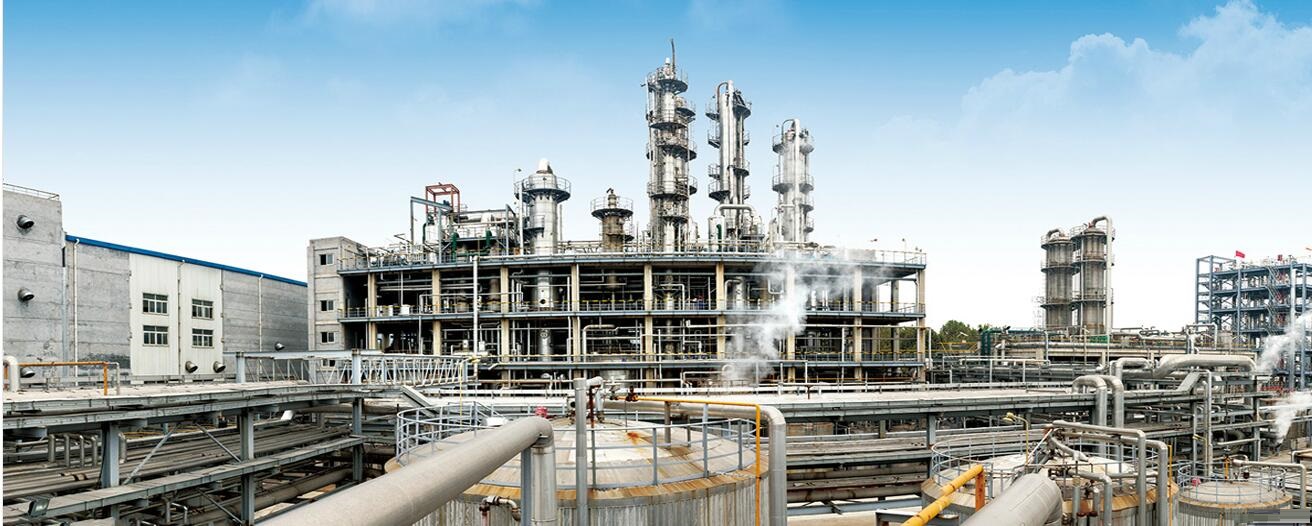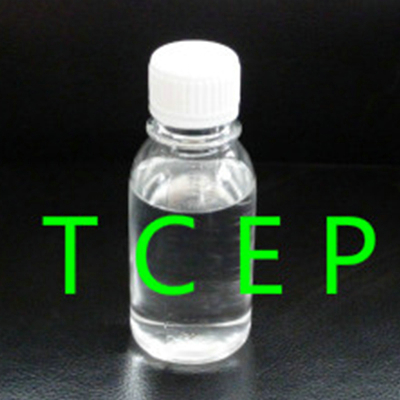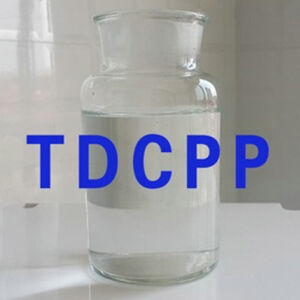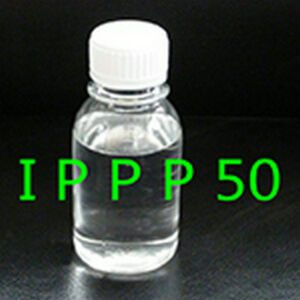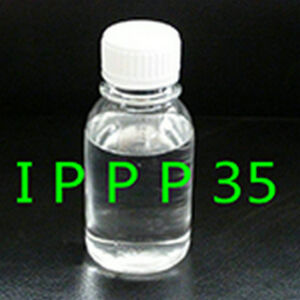Tris(2-Chloroethyl)Phosphate|TCEP
Description:
Used As Additive Type Halogenated Phosphate Flame Retardant And Plasticizer,Commonly Used In Flame Retardant Nitrocellulose And Acetate Fiber As The Substrate Of Paint Coatings,Unsaturated Polyester,Polyurethane,Acrylic,Phenolic Resin,Etc.,Also Can Be Used For Soft PVC Plasticizer Flame Retardant,Widely Used In Cellulose Acetate,Nitrocellulose Varnish,Ethyl Cellulose,Polyvinyl Chloride,Polyvinyl Acetate,Polyurethane,Phenolic Resin.
Product Information
Tris (2-Chloroethyl) Phosphate
Product Name: Trichloroethyl Phosphate Flame Retardant Plasticizer; Tris (β-Chloroethyl) Phosphate; Bis (2-Chloroethyl) Phosphate With 2-Chloroethyl Phosphate; Tris (β-Chloroethyl) Phosphoric Acid Ester; Tris (2-Chloroethyl) Phosphate; TCEP; Trichloroethyl Phosphate
CAS RN: 115-96-8
EINECS Number: 204-118-5
Molecular Formula: C6H12Cl3O4P
Molecular Weight: 285.4898
The Product Physical Information
Appearance: Pure Tris (2-Chloroethyl) Phosphate Is A Colorless Or Pale Yellow Oily Transparent Liquid With A Light Creamy Taste.
Refractive Index (N20D) 1.4731
Boiling Point Of 194 ° C, Flash Point Of 225 ° C
Freezing Point -64 ℃
Decomposition Temperature 240-280 ℃
Viscosity 38-47 Centipoise (20 ° C)
Phosphorus Content Of 10.8%
Chlorine Content Of 37.3%, With The General Organic Solvents (Such As Alcohol, Ketones, Aromatics, Chloroform, Etc.) Compatible, Insoluble In Aliphatic Hydrocarbons, Almost Insoluble In Water, And Hydrolytic Stability Is Good, In Alkaline Solution In A Small Amount Of Decomposition, The No Obvious Corrosion Of The Product.
The Product Process
There Are Three Industrial Methods: Phosphorus Oxychloride And Chloroethanol Reaction; Phosphorus Trichloride And Chloroethanol Reaction Reoxidation; Phosphorus Oxychloride And Ethylene Oxide Reaction (Industrial Commonly Used Method).
1, Phosphorus Oxychloride And Ethylene Oxide To Sodium Metavanadate As A Catalyst, At 50 ° C Reaction, The Reaction By Neutralization, Washing, Vacuum Dehydration Off The Low Boiling, That Is, The Finished Product. Chlorohydrin Can Also Be Used As Raw Materials, And Phosphorus Oxychloride Or Phosphorus Trichloride Reaction To Produce Tris (2-Chloro Ethyl) Phosphate.
2, 326 Kg Of Phosphorus Oxychloride And 1.0 Kg Of Sodium Metavanadate Into The Reactor. The Nitrogen In The Autoclave Was Driven By Nitrogen, And 650 Kg Of Ethylene Oxide Was Introduced Under Vacuum And Stirred At 45 To 50 ° C For 2 To 3 Hours. Evaporation Of Excess Ethylene Oxide After Alkali Neutralization To Neutral, Washed, Vacuum Dehydrated. Finished Product.
3. Put Phosphorus Oxychloride And Sodium Metaphosphate Into The Reactor. Nitrogen To Drive The Air, In The Vacuum Under The Access To Ethylene Oxide, At 45 ~ 50 ℃ Stirring 2 ~ 3h. Evaporation Of Excess Ethylene Oxide After Alkali Neutralization To Neutral, Washed, Vacuum Dehydrated Finished.
Fourth, Use:
1. Tris (2-Chloroethyl) Phosphate Has Excellent Flame Retardancy, Excellent Resistance To Low Temperature And UV Resistance, The Steam Can Only Be Used At 225 ℃ Above The Direct Ignition Can Be Fired, But The Fire The Source Is Immediately Self-Extinguishing. This Product Is A Flame Retardant Not Only Can Improve The Material Level Of Flame Retardant Materials, But Also Improve The Flame Resistance Of Water Resistance, Acid Resistance, Cold Resistance And Antistatic Properties. Commonly Used In Flame Retardant Nitrocellulose And Acetate Fiber As The Substrate Of Paint Coatings, Unsaturated Polyester, Polyurethane, Acrylic, Phenolic Resin, Can Also Be Used For Soft PVC Plastic Flame Retardant. This Product Is Used For The Amount Of Unsaturated Polyester 10% To 20%, In The Polyurethane Rigid Foam (Flame Retardant Polyether As Raw Material) Can Be About 10% In The Soft PVC Used As Auxiliary Plastic Flame Retardant When The 5% To 10%. Flame Retardants, Uranium, Thorium, Plutonium, Technetium And Other Rare Metal Separation Solvent Or Extractant.
2. This Product Is Widely Used In Chemical Fiber Fabrics, Cellulose Acetate As A Flame Retardant, In Addition To Self-Extinguishing, But Also Improve Water Resistance, Cold Resistance And Antistatic Properties. The General Amount Of 5 To 10 Copies. This Product Is An Excellent Flame Retardant For Synthetic Materials, And Has A Good Role In The Promotion, Widely Used In Cellulose Acetate, Nitrocellulose Varnish, Ethyl Cellulose, Polyvinyl Chloride, Polyvinyl Acetate, Polyurethane, Phenolic Resin , In Addition To Self-Extinguishing Products, But Also Improve The Physical Properties Of Products, Products Feel Soft, Also Known As Oil Additives And Rare Elements Of The Extractant, And Flame Retardant Rubber Conveyor Belt Is The Main Flame Retardant Materials , The General Amount Of Added 5% To 10%.
3. Used As Additive Type Halogenated Phosphate Flame Retardant And Plasticizer. Molecules In Both Phosphorus And Chlorine, Flame Retardant Effect Is Remarkable, Not Volatile And Hydrolysis, Good Stability To Ultraviolet Light. Applicable To Phenolic Resin, Polyvinyl Chloride, Polyvinyl Acetate, Polyurethane And So On. Also Used As Nitrocellulose Coating Flame Retardant, PVC Flame Retardant Plasticizer, Metal Extractant, Gasoline Additives And Polyimide Processing Aids And So On. Can Improve Water Resistance, Weatherability, Cold Resistance, Antistatic Property. Reference Dosage 5% To 20%

